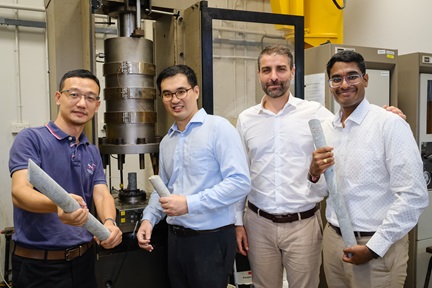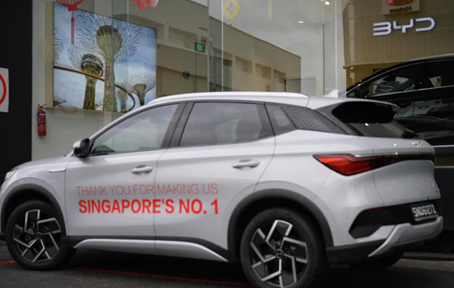PUB eyes 2 large-scale floating solar farms at Lower Seletar and Pandan reservoirs
First published on The Straits Times Online, 15 August 2021
 Singapore opened its first large-scale floating solar photovoltaic system at Tengeh Reservoir. ST PHOTO: LIM YAOHUI
Singapore opened its first large-scale floating solar photovoltaic system at Tengeh Reservoir. ST PHOTO: LIM YAOHUI
SINGAPORE - Land-scarce Singapore is looking to generate more value from its reservoirs by setting up two more large-scale floating solar farms.
A spokesman for national water agency PUB told The Straits Times on Aug 10 that two sites have been identified - Lower Seletar Reservoir for a 100 megawatt-peak (MWp) system, and Pandan Reservoir for a 44MWp one.
PUB said the proposed initiatives will help advance its efforts in tapping green energy for its operations.
It plans to award a tender in November to study the solar farms' feasibility, with the work taking about two years to be completed.
The news comes a month after Singapore opened its first large-scale floating solar photovoltaic (PV) system at Tengeh Reservoir.
The 60 MWp facility - about the size of 45 football fields - is operated by Sembcorp Floating Solar Singapore, a wholly owned subsidiary of Sembcorp Industries.
PUB said the proposed solar PV systems will take up less than 20 per cent of the surface area at both reservoirs, which also host recreational fishing and water sports activities.
The Singapore Rowing Association is located at Pandan Reservoir, and national rowers train there.
Draft plans for both sites include spaces for recreational water sports to continue, with a competitive lane for rowing to be set aside at Pandan Reservoir.
Dr Ngin Hoon Tong of the Energy Research Institute at Nanyang Technological University (ERI@N) said that besides not taking up land, floating solar farms may have higher energy yield than land-based ones. Water will help to cool the solar modules, allowing them to perform better.
Dr Ngin added that floating PV systems also reduce water loss through evaporation and curb algal blooming in the reservoirs.
However, Professor Subodh Mhaisalkar, director of ERI@N, warned that solar panels will block sunlight from reaching the depths of the reservoirs. This can affect the oxygen content in the water and affect other biological activities in the reservoirs.
"So deployment needs to go hand in hand with environmental impact analysis and monitoring," he said.
In its statement to ST, PUB said it will conduct studies and assessments before any decision is made to proceed with the projects.
Another expert, Dr Thomas Reindl, said that while solar energy remains the most viable green energy technology for deployment here by far, it is not possible to power the whole island with PV systems. He is the deputy chief executive of the Solar Energy Research Institute of Singapore at the National University of Singapore.
He added that green energy imports from elsewhere will have to be considered, whether from neighbouring countries or farther afield. These include hydropower from Laos or wind and solar power from Australia.
As part of Singapore's Green Plan, two gigawatt-peak (GWp) of solar energy is set to be employed by 2030, of which 1.5GWp will be rolled out by 2025.
The experts said 2GWp is sizeable and can cater up to a quarter of peak power demand at one point, when the sun is at maximum intensity.
However, the power generated by the PV systems on a whole would still be less than 5 per cent of the country's annual energy demand, said Prof Subodh.
Dr Reindl suggested that while land constraints will always be a challenge for PV system deployment here, there is a need to do more and be more creative.
He suggested integrating systems on the facades of buildings, or utilising empty plots of land as solar farms, even if they are available for only a few years until a new development takes their place.
In a bid to widen its clean energy options, PUB will also be deploying two smaller 1.5MWp floating PV systems at Bedok and Lower Seletar reservoirs.
Electricity generated will power Bedok Waterworks and raw water pumping stations at these two reservoirs.
Construction is in progress, and these systems are expected to be operational by the end of this year.







